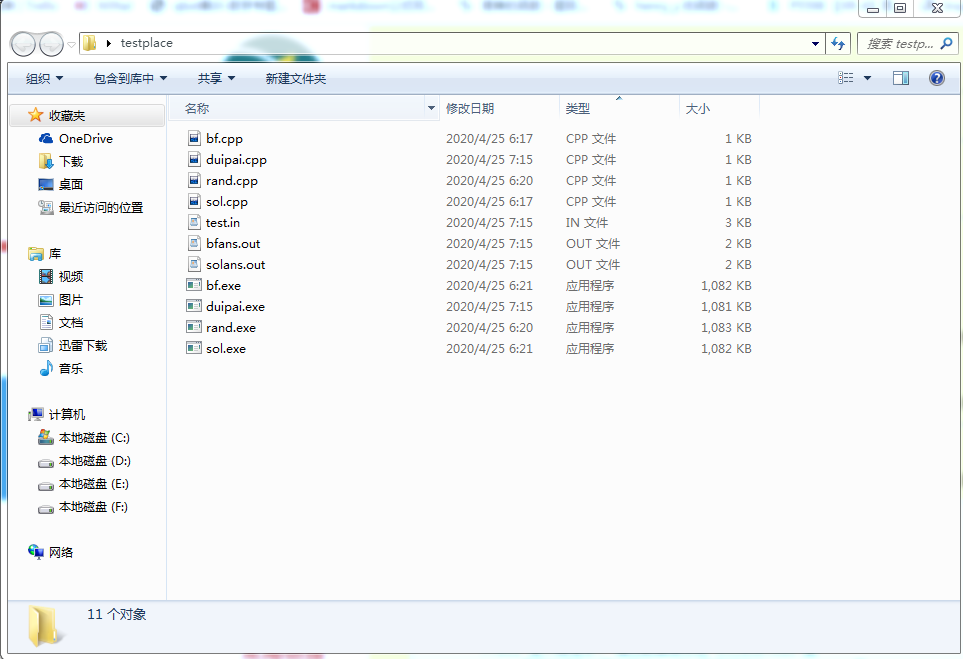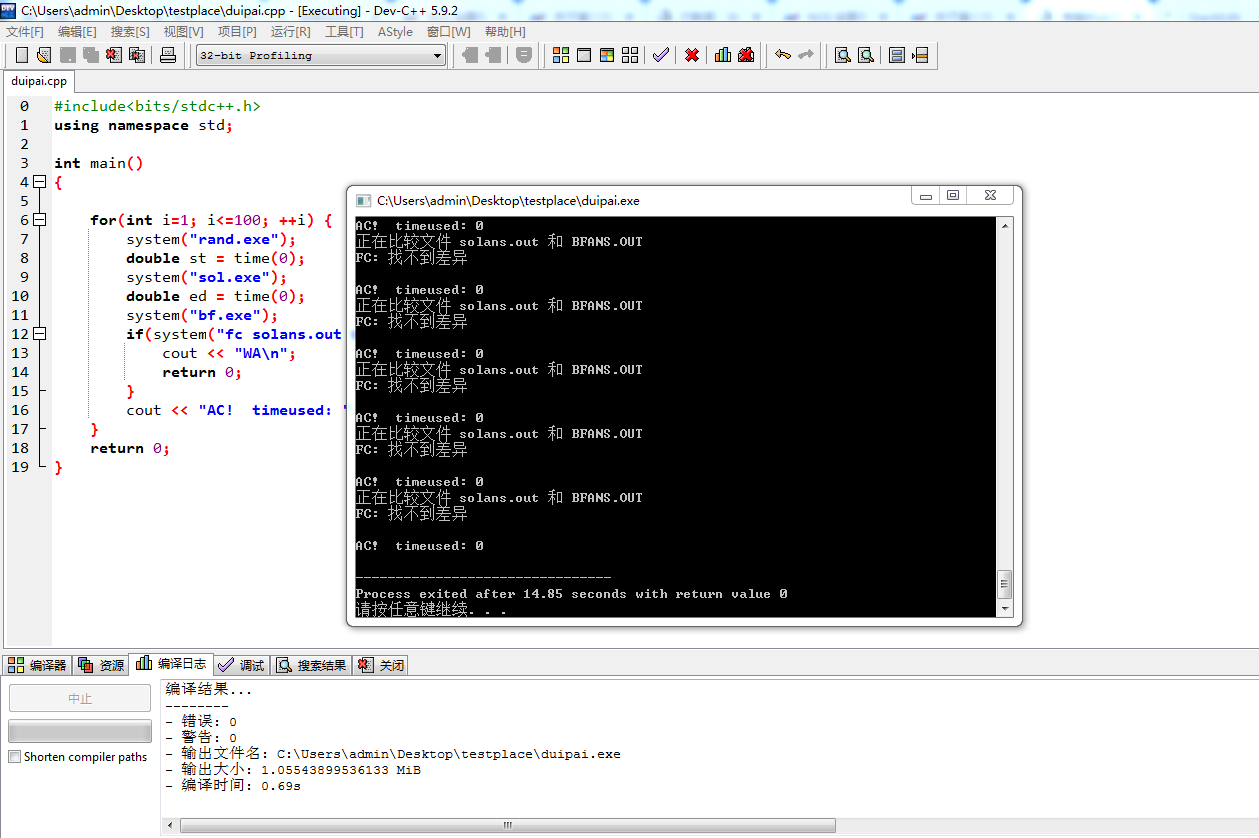今天就 CCF Online测试 了, 于是花了点时间复习下对拍。
对拍的目的:确保程序的正确性。
适用场景: 暴力容易写, 高效算法难调。
例子:
给定 \(n\) 个数\(a_1 \dots a_n\), \(m\) 次询问给定 \(x、y (保证 x \leq y)\), 求 \(\sum_{i=x}^y a_i\)。
数据范围输入输出格式什么杂七杂八的先不管。
重要的是, 已经写出了比较牛逼的高分程序, 但是很慌,觉得很不稳, 就想人工测试下程序的正确性(不是静态查错法)。
如此, 就需要人造些(比较强的)测试数据。
一组测试数据要有输入和正确输出, 输入自然是用输入数据生成器来造, 输出就要写似乎绝对正确的程序跑出来。
这是“对拍”中最为核心的程序。
由于我将对拍所用到的程序都放在了一个文件夹里, 所以下面的运行才这么简单qwq(没写路径)
#include<bits/stdc++.h>
using namespace std;
int main()
{
//xx.exe 是 xx.cpp 编译出来的可执行程序
//rand 是输入数据生成器, 生成的输入数据保存在 test.in 里
//sol 是不稳程序, 输出数据保存在 solans.out 里
//bf 是可能很稳的暴力程序, 输出数据保存在 bfans.out 里
for(int i=1; i<=100; ++i) {
system("rand.exe");
double st = time(0);
system("sol.exe");
double ed = time(0);
system("bf.exe");
if(system("fc solans.out bfans.out")) {
cout << "WA\n";
return 0;
}
cout << "AC! timeused: " << ed-st << '\n';
}
return 0;
}
给出此题的输入数据生成器和暴力。(实际上, 这俩加起来似乎才算数据生成器)。
//输入数据生成器
//rand.cpp
#include<bits/stdc++.h>
using namespace std;
int rd(int n) { // 1 ~ n
return rand() % n + 1;
}
int main()
{
freopen("test.in","w",stdout);
srand((unsigned)time(0));
int n = rd(1000);
cout << n << '\n';
for(int i=1; i<=n; ++i) {
int a = rd(1000);
cout << a << ' ';
}
cout << '\n';
int m = rd(1000);
cout << m << '\n';
for(int i=1; i<=m; ++i) {
int x = rd(n), y = rd(n);
if(x>y) swap(x,y);
cout << x << ' ' << y << '\n';
}
fclose(stdin);
fclose(stdout);
return 0;
}
//似乎绝对正确的暴力
//bf.cpp
#include<bits/stdc++.h>
using namespace std;
const int maxn = 1005;
int n, a[maxn];
int main()
{
freopen("test.in","r",stdin);
freopen("bfans.out","w",stdout);
cin >> n;
for(int i=1; i<=n; ++i) {
scanf("%d", &a[i]);
}
int m; cin >> m; while(m--) {
int x, y; scanf("%d%d", &x,&y);
int ans = 0;
for(int i=x; i<=y; ++i) ans += a[i];
cout << ans << '\n';
}
fclose(stdin);
fclose(stdout);
return 0;
}
以下是神奇的被测程序
//不稳的被测程序
//col.cpp
#include<bits/stdc++.h>
using namespace std;
const int maxn = 1005;
int n, a[maxn];
int main()
{
freopen("test.in","r",stdin);
freopen("solans.out","w",stdout);
cin >> n;
for(int i=1; i<=n; ++i) {
scanf("%d", &a[i]);
a[i] += a[i-1];
}
int m; cin >> m; while(m--) {
int x, y; scanf("%d%d", &x,&y);
cout << a[y] - a[x-1] << '\n';
}
fclose(stdin);
fclose(stdout);
return 0;
}
文件位置展示

对拍效果展示

最后的总结
- 在本文中, 多次强调了 可能很稳的暴力程序一词, 这里再次强调。
- there有各种随机数据的生成模板以及Windows下的对拍程序, 十分值得参考